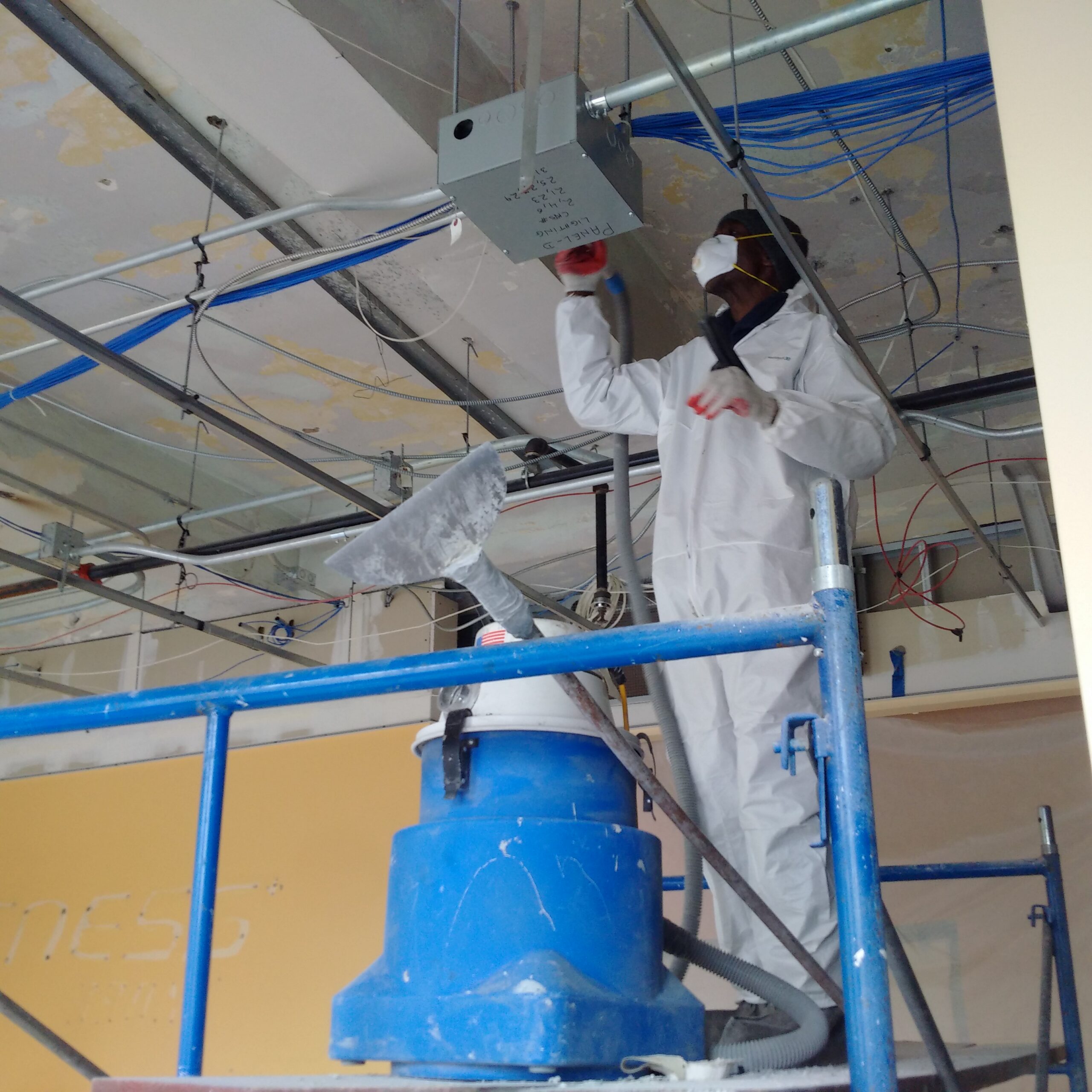NYC Lead Removal Contractors-- Obtain Safe and Reliable Providers
NYC Lead Removal Contractors-- Obtain Safe and Reliable Providers
Blog Article
Vital Devices and Methods for Efficient Lead Infraction Clean-up
Resolving lead violations properly necessitates a thorough approach that blends the right devices with strategic methods. Simultaneously, the usage of specialized cleaning tools, such as HEPA vacuum cleaners and lead-specific cleaning agents, is critical for extensive impurity removal. Effective containment approaches, consisting of plastic sheeting and unfavorable air stress systems, are essential to avoid the spread of harmful products.
Individual Protective Devices
Individual safety tools (PPE) is a vital part in the reliable administration of lead contamination clean-up. PPE works as a vital barrier, protecting workers from the harmful results of lead direct exposure, which can cause severe health repercussions. The vital PPE for lead cleaning consists of respirators, safety apparel, handwear covers, and eye security. Each kind of tools is particularly designed to alleviate various threats linked with lead fragments and dirt.
Respirators, particularly those outfitted with HEPA filters, are vital for filtering air-borne lead particles, protecting against breathing. Protective garments, including coveralls and non reusable suits, protects against lead dust from sticking to employees' garments, lowering the risk of second contamination.
Furthermore, strenuous training on the right usage and upkeep of PPE is vital. Employees need to be informed on wearing and doffing procedures to stay clear of contamination. Regular examinations and replacements of PPE elements are necessary to preserve their safety capabilities, making certain a safe and certified cleaning operation.
Specialized Clean-up Devices

Another essential tool is the wet/dry vacuum cleaner, which can successfully tidy up both dirt and fluid impurities. These vacuums frequently feature HEPA filters to supply an added layer of safety. Wet cleans or tack towels are also important for surface area cleansing; they are specifically developed to catch and hold lead fragments, reducing the risk of spreading contamination.
For even more persistent down payments, specialized lead-removal cleaner are required. These agents are developed to break down lead bits, making them less complicated to get rid of. Scrub brushes with sturdy bristles can aid in this process, especially on rough surfaces where lead dust has a tendency to adhere much more strongly.
Furthermore, encapsulants are utilized to seal lead-contaminated surfaces, stopping the release of lead dust. These specialized paints and finishings are created to stick to different substrates, offering a long-lasting service for lead containment.
Effective Containment Methods
Effective control techniques are essential in mitigating the spread of lead contamination throughout cleanup tasks. Carrying out durable containment approaches makes sure that lead particles do not move to unaffected locations, therefore safeguarding both employees and the environment (DOH & HPD Lead Violation Removal NYC).

To improve containment, encapsulants can be related to surface areas that are not being removed or disrupted. These specialized layers bind lead dirt, decreasing its schedule for resuspension. Additionally, all workers must use suitable Individual Safety Tools (PPE), consisting of respirators and disposable suits, to stop contamination spread.
Safe Disposal Practices
Making sure safe disposal techniques is a vital element in the monitoring of lead contamination cleanup. Correct disposal reduces the risk of lead re-entering the environment and endangering public health (DOH & HPD Lead Violation Removal NYC).
Moving lead waste calls for adherence to stringent guidelines. Using qualified contaminated materials providers makes sure that the materials are managed properly. Documents, consisting of materializes outlining the kind and amount of waste, must go along with deliveries to track the waste from the website of beginning to its last disposal location.
Designated contaminated materials disposal centers are outfitted to manage lead-contaminated materials safely. These facilities often employ advanced techniques such as stabilization, solidification, or chemical treatment to counteract the lead before disposal. Landfilling in specialized, lined locations that stop leachate from contaminating groundwater is a typical technique for final disposal.
Regular training for personnel associated with lead garbage disposal is important to maintain security standards and protect against accidental exposure. By sticking to these methods, companies can substantially reduce the environmental and health influences associated with lead contamination.
Regulatory Compliance Tips

Following governing compliance is extremely important in the successful implementation of lead contamination cleaning. Comprehending and complying with government, state, and regional guidelines makes sure not just the security and wellness of people but additionally the official website lawful and financial health of the cleanup company. The Environmental Protection Agency (EPA) sets rigorous requirements, such as the Lead Remodelling, Repair, and Painting (RRP) Guideline, which mandates correct certification and training for contractors taking care of lead-based tasks.
Compliance begins with an extensive analysis of relevant laws and policies. Organizations needs to stay updated on any kind of legal changes, which can be helped with with normal training sessions and signing up for industry updates. Documentation is one more important conformity aspect; keeping detailed documents of all activities, including evaluation records, staff member training weblink logs, and disposal manifests, is vital.
Moreover, engaging with certified lead assessors or take the chance of assessors makes certain that lead threats are properly identified and mitigated. Companies need to impose using Individual Protective Equipment (PPE) and guarantee that safety and security procedures are purely adhered to. Clear interaction with stakeholders, including staff members, customers, and regulatory bodies, will certainly foster a culture of conformity and liability, inevitably adding to a much safer and extra effective lead clean-up procedure.
Conclusion
Effective lead violation clean-up necessitates the combination of specialized devices and strategic techniques to guarantee safety and security and effectiveness. Personal safety tools (PPE) safeguards workers from direct exposure, while secure disposal methods and stringent adherence to regulative compliance are essential for properly handling dangerous waste.
Report this page